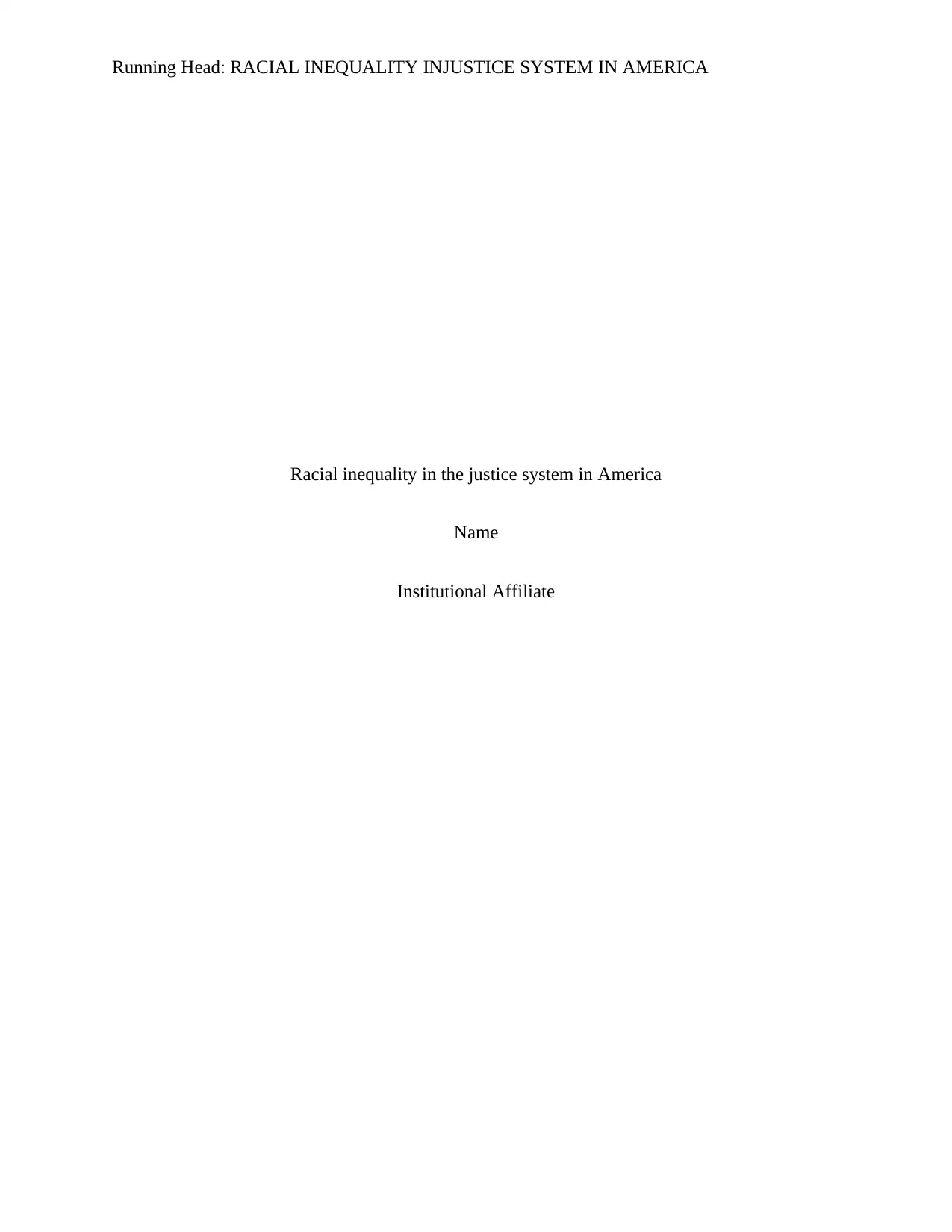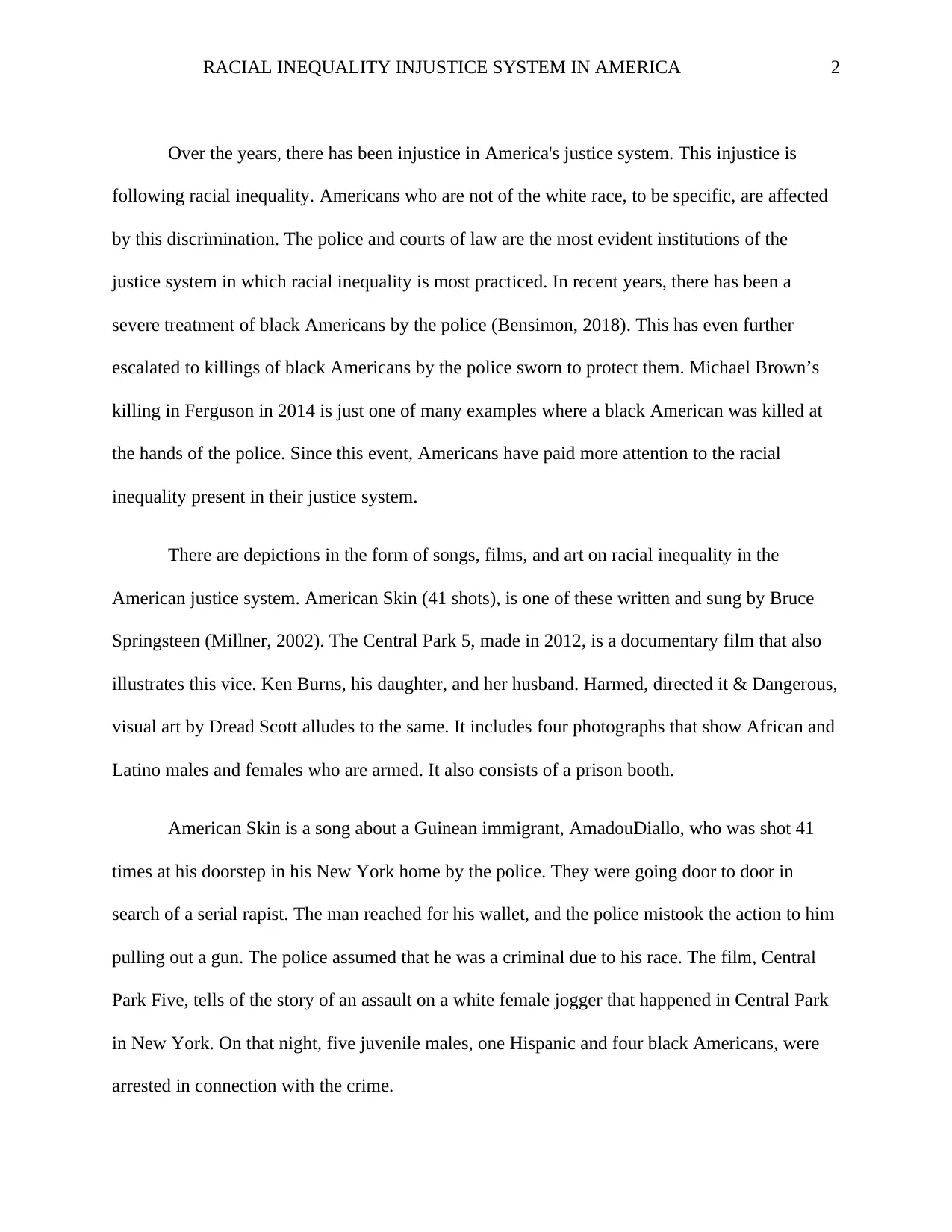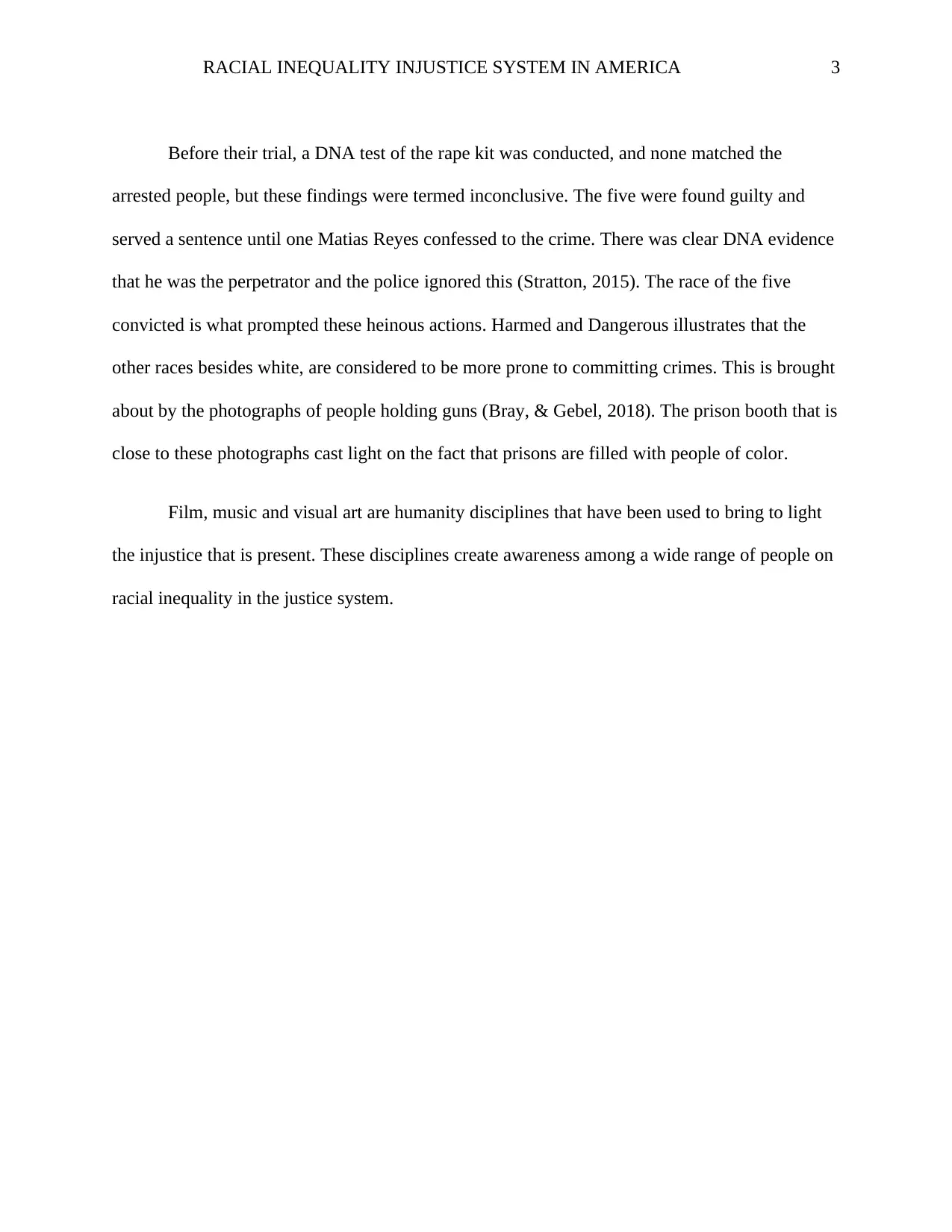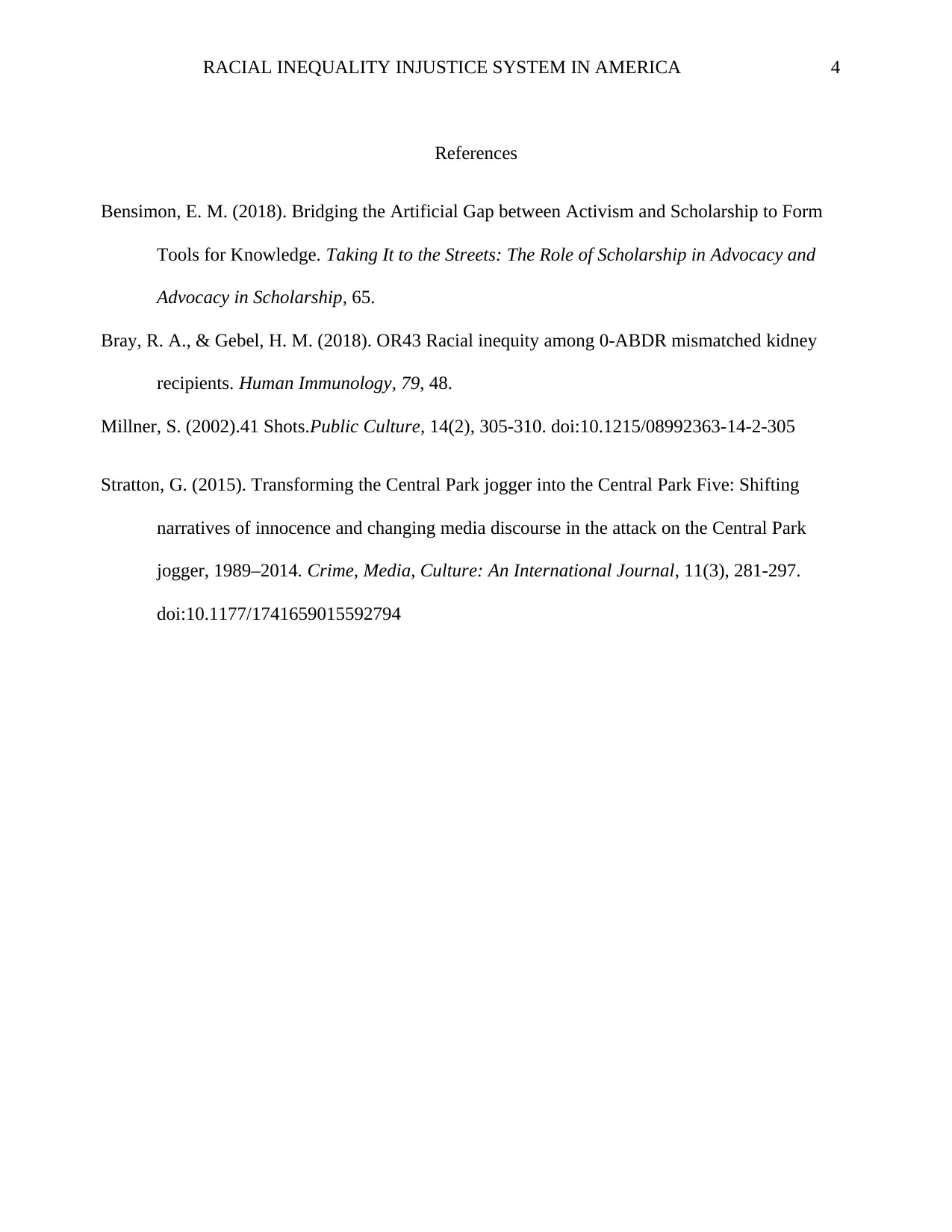Analysis of Racial Inequality in the American Justice System Project
VerifiedAdded on 2023/06/03
|4
|760
|361
Project
AI Summary
This project examines racial inequality within the American justice system, focusing on how it is depicted across different humanities disciplines. The paper highlights the injustices faced by non-white Americans, particularly in interactions with law enforcement and the courts. It analyzes the impact of racial bias through the lens of three different works: Bruce Springsteen's song "American Skin (41 shots)", the documentary film "Central Park Five," and the visual art piece "Harmed and Dangerous" by Dread Scott. The project illustrates the use of these different mediums to bring awareness to racial inequality in the justice system. The works are examined in the context of specific cases, such as the killing of Michael Brown and the wrongful convictions in the Central Park Five case, demonstrating how art can be used to expose and critique societal injustices. The project highlights the role of film, music and visual art in creating awareness about racial inequality.
1 out of 4











![[object Object]](/_next/static/media/star-bottom.7253800d.svg)